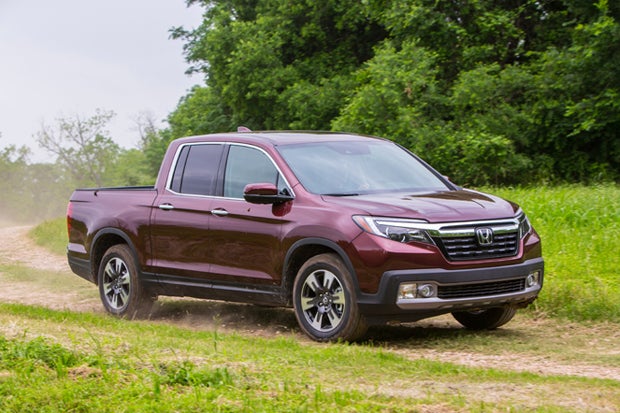
When Honda announced the first Ridgeline in 2005, it looked to challenge the conventional pickup truck with a unique unibody construction. The blend of truck and SUV features made the Ridgeline a hybrid of sorts that appealed to both truck and SUV owners looking for something capable without some of the compromise in ride quality inherent with a body-on-frame pickup.
After a brief hiatus, Honda has returned with its second-generation Ridgeline that will be offered later this year as a 2017 model. Many of the features found on the previous generation exist on this new model, such as a truck bed that features a built-in trunk and a tailgate with dual-hinge operation. The biggest change, however, is the appearance, as Honda really looked to give the new Ridgeline styling that resembles traditional pickup truck design.
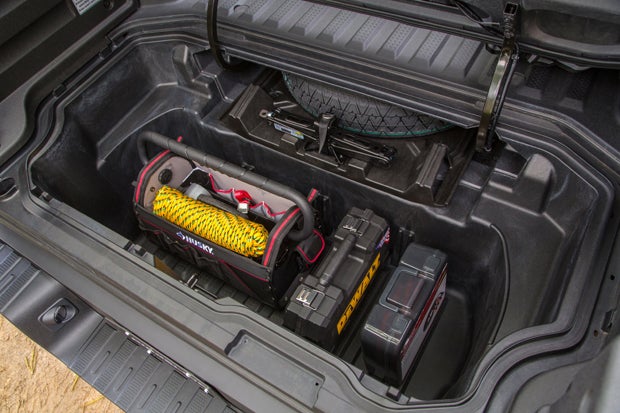
Honda invited us out to Texas to get behind the wheel of the new truck both on road and off. Here’s what we learned during our trip to San Antonio.
More Than Looks?
Honda knows it faces a challenge with the perception of its Ridgeline. More than anything, Honda needs to convince truck buyers this vehicle is capable and tough. One of the first steps Honda took in getting that point across is making sure the Ridgeline looks the part.
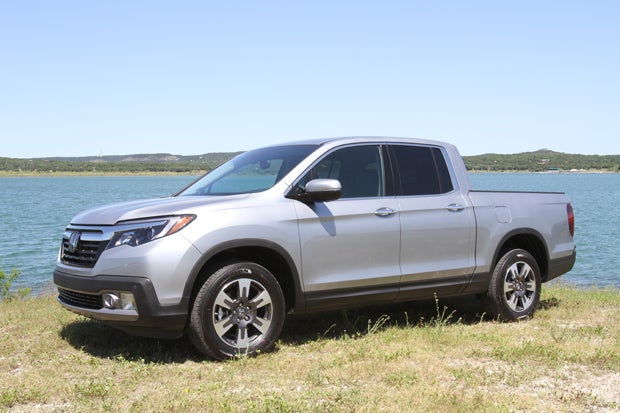
Honda really toyed with this notion when first teasing the Ridgeline prior to the 2016 Detroit Auto Show. In that first sketch, Honda showed its new Ridgeline sporting a line between the cab and the bed. Speculation ran rampant that maybe Honda decided to forgo the unibody design and shift to a traditional body-on-frame platform like its mid-size truck contemporaries, when in reality Honda never had such plans... and it didn't mind that it helped build anticipation for the new truck. In reality, Honda tells us the added length of the truck made the previous one-piece side on the first-gen truck no longer feasible for production on the new one. Now two separate pieces are used for the side body of the truck, which also helps reduce the cost of repair work in the event of an accident.
In the end, while the looks of the Ridgeline have changed, the heart and soul of the truck hasn’t. The Ridgeline is still a unibody truck. And while Honda wants the Ridgeline to have a more traditional truck-like appearance, it certainly doesn’t shy away from its unibody construction – in fact, they trumpet it. Honda feels its unibody platform offers superior performance and ride quality, which is a trait on which mid-size truck buyers coming from SUVs and CUVs place great emphasis.
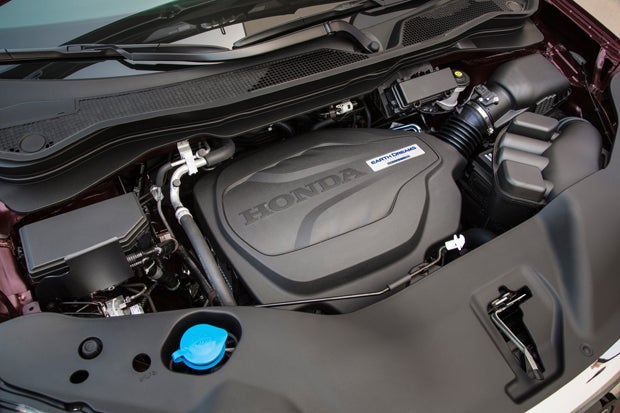
Honda also increased the power output on the next-gen Ridgeline with a revised i-VTEC 3.5-liter V6. This direct injection engine now produces 280 hp (at 6,000 rpm) and 262 lb.-ft. of torque (at 4,700 rpm). The updated engine will be mated to a six-speed automatic transmission. Honda’s all-wheel drive (AWD) Ridgeline has an EPA fuel economy rating of 21 mpg combined (highest in class among gasoline-powered four-doors), and in our test truck during mostly on-road operation we averaged 22.4 miles per gallon.
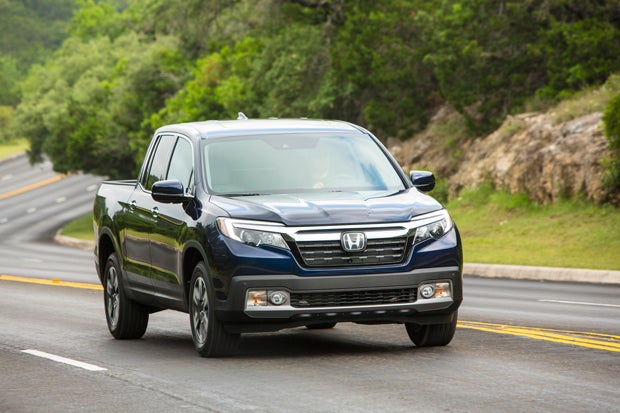
How it Drives
Honda doesn’t shy away from the Ridgeline’s unibody construction because it believes this is a key reason why it has superior handling and ride quality. Honda’s spot on with it beliefs, too, because the Ridgeline is by far the smoothest of the mid-size offering on the highway.
The Ridgeline is built on Honda’s Global Light Truck platform, so it shares the same basic chassis as the Pilot SUV. What makes the Ridgeline different, however, is that more than half of the chassis parts have been re-engineered for improved strength, which Honda says helps improve torsional stiffness on the truck. The Ridgeline’s independent suspension simply provides a smoother ride on the highway than traditional body-on-frame trucks with solid axles and rear leaf springs.
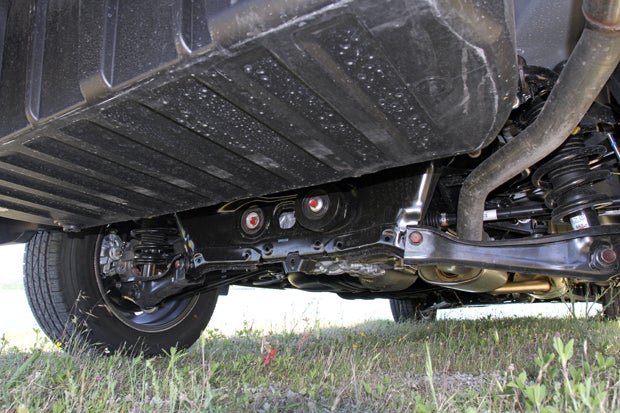
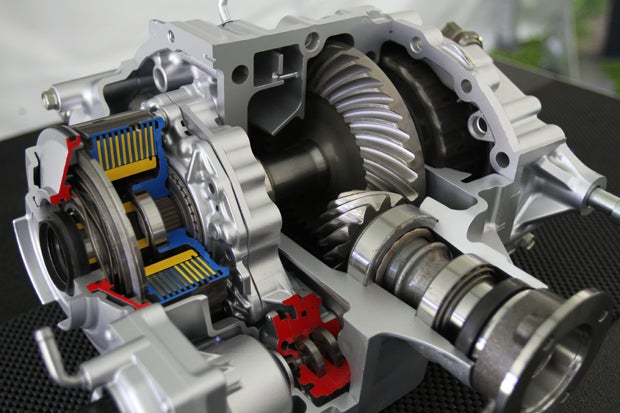
Honda upgraded the suspension package as well on the new Ridgeline, with new MacPherson struts employed up front along with a faster steering ratio. Out back, a new multi-link rear suspension is featured that Honda says improves response and steering in corners. Honda features its Amplitude Reactive Damper technology on the Ridgeline, which is a system that employs two separate damping pistons where the main piston provides damping for mostly small inputs during normal street driving while the second offers additional damping force over rougher surfaces or during aggressive driving.
For stopping power, Honda employs four-wheel disc brakes, with its Electronic Brake Distribution helping distribute front-to-rear braking force. The truck also features a new tire designed specifically for the truck in the Firestone Destination LE2 (in size 245/60R18). Honda Sensing has also makes its way onto the new Ridgeline to provide additional safety features to the truck, such as adaptive cruise control, lane-keep assist, forward collision warning and rear traffic alert, among others. We didn’t get the chance to test them all (like collision warning, fortunately) but we did appreciate adaptive cruise control but quickly turned off the lane departure warning due to its over-sensitivity.
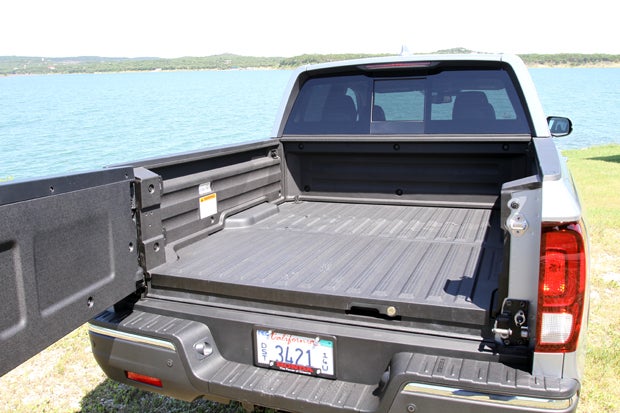
Doing Work
The Ridgeline is touted for its refinement, and yet Honda still wants it to handle the load when it’s time to work or play hard. Out back, Honda extended the Ridgeline’s bed by 4 inches (for a bed that's 5’4” total in length), and the sheet-molded compound bed also features a new UV protection (versus the previous painted design) that Honda says won’t fade or break down over time. There’s enough space out back to hold a few dirt bikes or even an ATV, and there are eight different tie-down points for securing gear. The larger bed on the new Ridgeline is slapped with a hefty 1,584-lb. payload rating.
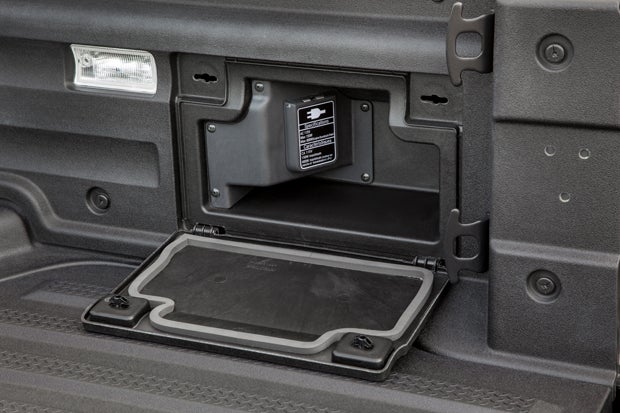
The unique bed design certainly has its pros and cons. Although not as deep as the competition, the Ridgeline’s higher bed means it doesn’t lose lateral space to wheel wells, so housing wood sheets or other wide cargo is a much simpler task. Its height does make loading larger items, such as motorcycles, a little more of a task though. The trunk itself is very useful and offers secure storage for relatively large items. One downside to the bed design, however, is when large cargo or gear (such as a dirt bike) is loaded in the bed the trunk can’t be accessed, which would be unfortunate in the event that the small spare tire is needed since this is where it is housed. The spare tire not being full-size is another point of contention, because it presents a potential issue if the truck owner gets a flat while pulling a trailer. The dual-action tailgate is a signature Ridgeline design, as it pulls down like a traditional tailgate but also can open in a swing-out fashion. It’s a very cool feature, and the only downside to the design is there’s no easy-lower device installed.
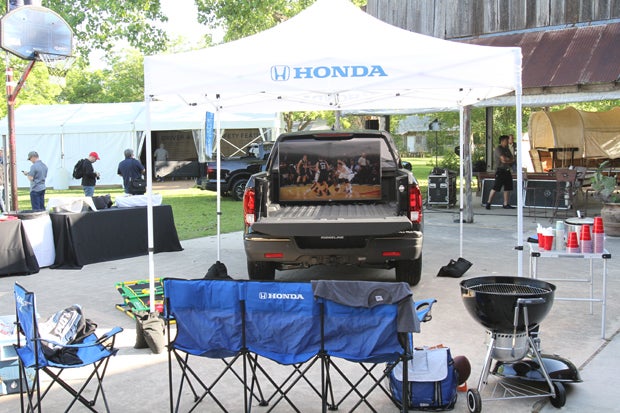
Honda found yet another way for the truck bed to be unique, as it is the first application of a new in-bed audio system that actually uses the bed itself as the speaker (with the aid of six exciters much like magnets in a tradition speaker) for tailgating events. Honda also built a 400-watt plug in the bed, which is thoughtfully covered to stay out of the elements when not in use. For some reason Honda only built a two-prong outlet, with one representative saying that most of the devices they feel will be used in this application only feature two prongs. They dropped the ball on this one … how was something as common as a three-prong laptop computer cord not considered?
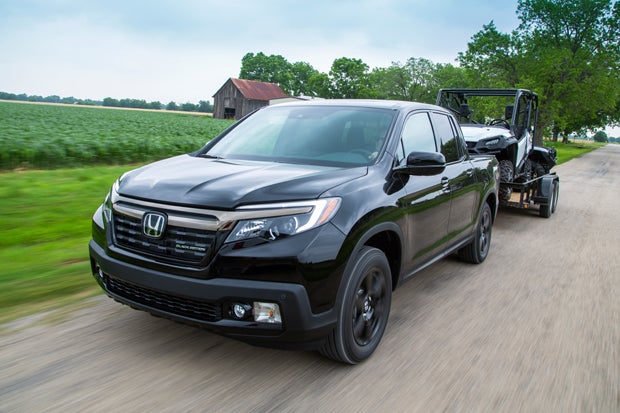
The Ridgeline doesn’t top the category in towing capacity (it's actually the lowest), but it still offers a respectable 5,000-pound maximum tow rating, which is at the high end of what Honda research says mid-size truck buyers will pull. We had the chance to test the truck while pulling a 4,000-pound trailer loaded with a Honda Pioneer 1000 and an ATV, and the Ridgeline certainly didn’t feel out of its element. While we didn’t have any hills to test on, the truck accelerated decently under load on the flat Texas roads and the rear end didn’t feel bothered by the weight, and overall it felt easy to maneuver in tighter quarters. The engine did have to strain a little to get up to speed, and that left us feeling as though the truck will struggle on steeper inclines. In this instance, a tow/haul mode might come in handy, but it’s possible Honda didn’t install one because it doesn’t truly believe many owners will tow loads in excess of a few thousand pounds.
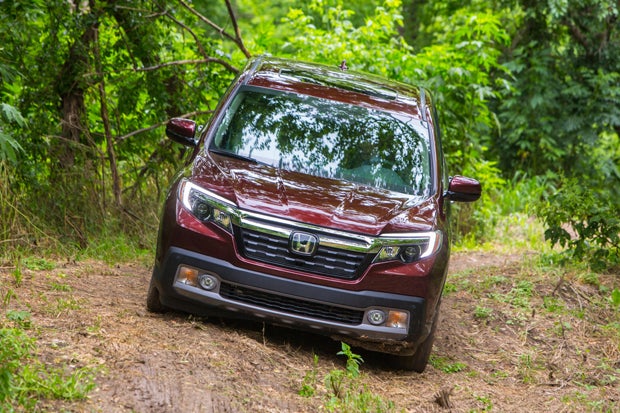
Getting Dirty
Throughout our testing in Texas, Honda wasn’t afraid to bring along the competition, specifically for the second day of off-road driving on a private ranch. Honda constructed a few different courses for us to drive the Ridgeline back to back with a Toyota Tacoma Limited and a Chevy Colorado SL.
On the plus side, the new Ridgeline offers Intelligent Traction Management (the AWD model features more system settings than 2WD) with settings for Snow, Mud and Sand. The strengths of this system may have been best exemplified in a sand-pit Honda built, where we stopped right in the middle and were easily able to drive out thanks to the system skipping first gear and going straight into second to avoid slippage and help transfer torque accordingly.
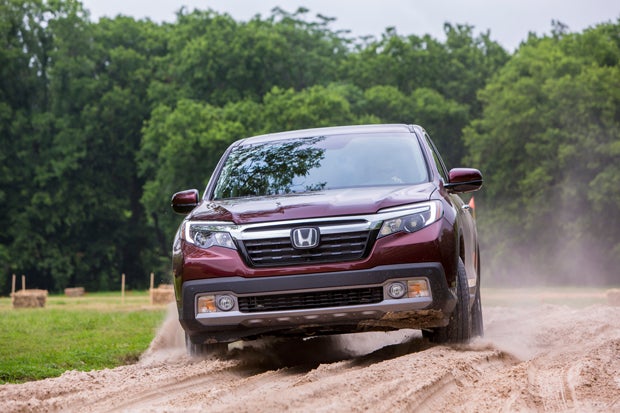
Speaking of transferring torque, the Ridgeline features a unique torque vectoring system in the backend of the truck to aid in its off-road and on-road performance. Using dual clutches and a gear ratio that is 2.7 percent higher than the front gear ratio, the torque vectoring AWD system allows Honda to distribute up to 70 percent of the torque to either side of the truck when needed. If both gear ratios were the same front and rear, only 50 percent of the available torque could be transferred, so the end result is the system can transfer more power and torque to one side for ideal traction. In real world terms, this meant the Ridgeline had the most controlled handling in rally-style turns on dirt. Whereas you’d expect a truck to slide the rear end around a corner in two-wheel-drive, the Ridgeline would send that additional torque to the outside tire to actually help pull the truck into the turn and not lose traction. It made the handling of the truck, in this specific instance, far more predictable.
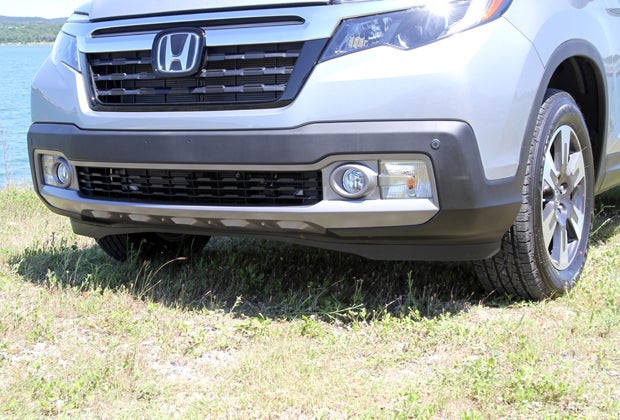
On one of the off-road courses we forded a small creek, climbed a dirt hill peak, tackled some rutted roads, and even traversed a few off-camber obstacles. Overall, the Honda performed well in most instances. Yet in displaying the Ridgeline’s strengths in the off-road environment, these courses also showed its weaknesses. There’s no doubt the Honda is a quiet vehicle compared to the more traditional trucks in the class, and NVH (noise, vibration and harshness) was a key focus during design, yet we couldn’t help but notice the Honda wasn’t any quieter than the rest off-road, mainly because a lot of trail noise was transmitted through the floor – not through the tripled sealed doors that perform their job just fine. The Ridgeline has the lowest ground clearance in the class at 8 inches, and this will certainly limit the locations and amount of off-roading we’d want to do in this truck. Although the suspension does soak up the bumps relatively well in most instances, there’s simply not enough suspension travel to take on anything very challenging. The lack of suspension travel also was notable on the cross-rutted road, where we clearly had the most headshake in the Ridgeline compared to the competition.
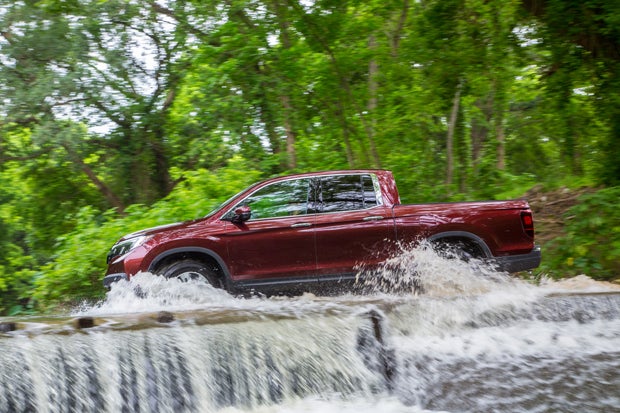
Lasting Impression
There’s a lot to like about the new Honda Ridgeline. It’s a very nice truck to drive on the highway, and it’s still in its wheelhouse for moderate off-roading. The Ridgeline offers the most passenger volume and clearly feels the most spacious in the class. Its rear seat offers plenty of cargo space, and we saw first hand it could fit up to a 47-inch TV or a mountain bike without needing to remove the front tire. The addition of Apply Carplay and Android Auto will make even the techiest in the family happy, and the interior layout and design feels well appointed and less like a “rugged” truck and more like a well-appointed SUV.
For all its benefits on-road, the limitations of the Ridgeline’s unibody construction cannot be denied off the highway. If the trail starts to get tough, the Ridgeline will quickly get out of its comfort zone. It offers the least ground clearance in class and doesn’t offer a great deal of suspension travel. Although the torque vectoring system works well in some instances, we’d still opt for a selectable locking rear diff for when the going gets tough. The Ridgeline also offers the lowest maximum tow rating of the class, although that may not be a big deal to this buyer since mid-size owners don’t typically tow a great deal.
Those looking for a trail truck will likely not find what they need in the Ridgeline, but those seeking an all-around vehicle with truck features will appreciate it far more. The Ridgeline isn't the best truck for the trail, but it's the perfect truck to get to the trail, whether that’s to go dirt biking, camping, hiking or whatever outdoor activity you enjoy. It’s comfortable and spacious to use as a family vehicle in the week and is well suited for road trips on the weekend.
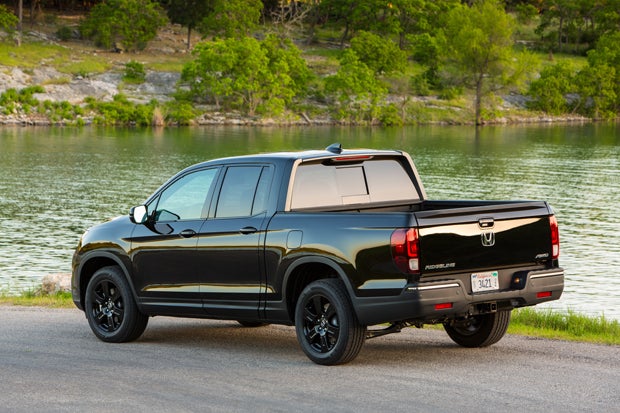
Pricing starts out at $29,475 for a 2WD RT, with the AWD RT juming up to $31,275. The AWD RTL model, the first of the models where the 8-inch touchscreen is equipped versus the 5-inch, is competitively priced at $35,580, but the prices stretch all the way up to $42,870 for the Black Edition AWD model.


 Your Privacy Choices
Your Privacy Choices